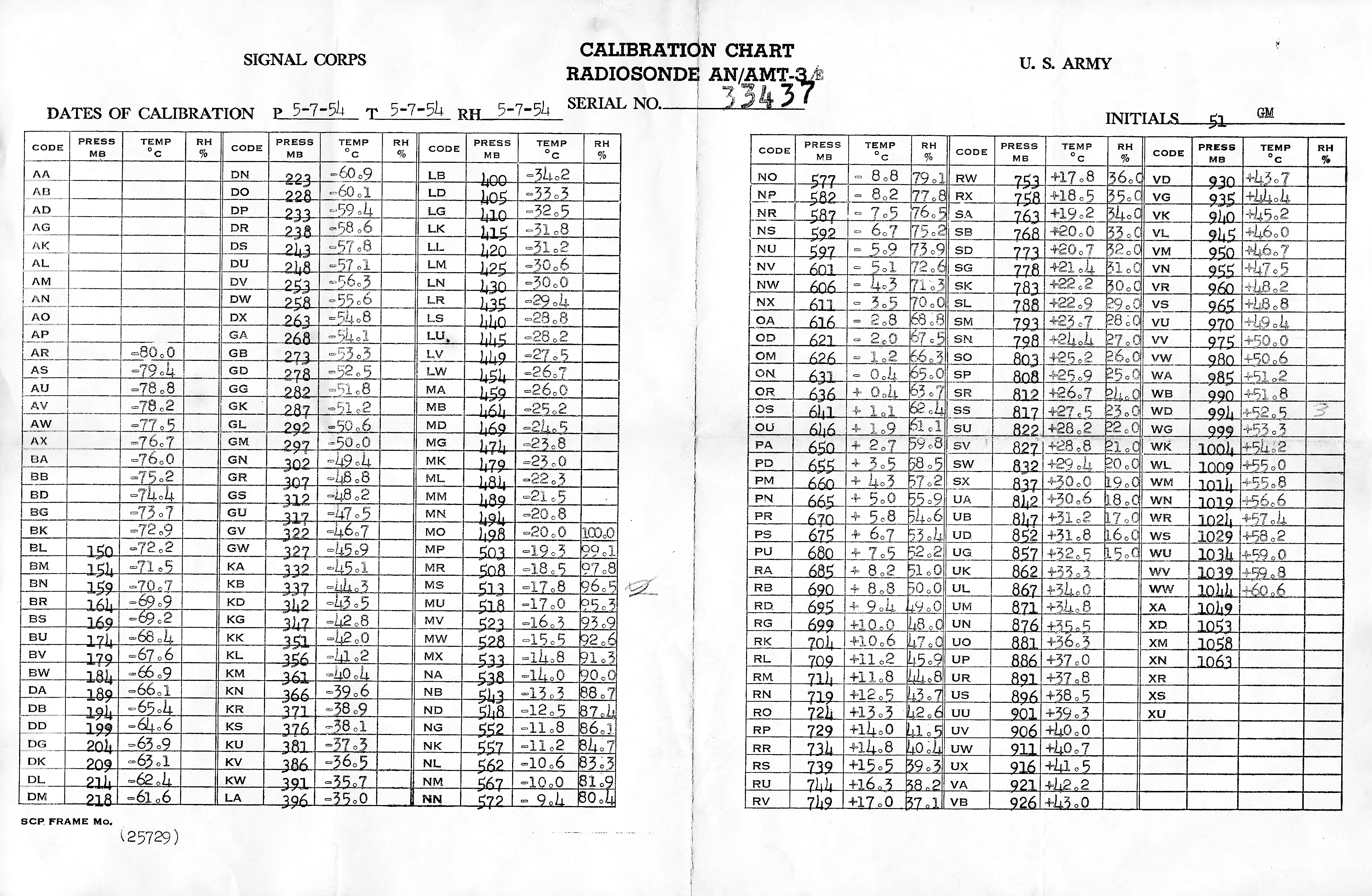Telemetry During WWII
| A
radiosonde is
A small package of meteorological instruments which is carried through
the atmosphere by balloon or other means and automatically transmits
measurements of conditions at various heights by radio. The
parameters detected are generally barometric pressure, temperature, and
relative humidity. The AN/AMT-3, developed for the U.S. Army Signal Corps circa 1943, is a dropsonde, released on a parachute from an aircraft at altitude, rather than carried aloft by a balloon. This device transmits it's data as a series of 3 two-letter groups in Morse code (continuous wave), on an HF frequency, e.g. 3135KHz. The data could be received by ear on the aircraft's standard communications receiver, typically a BC-348. So no additional special equipment is required. However, the Evans Signal Laboratory did develope an airborne recorder for this purpose. Here's a description of the overall system from Tele-Tech Magazine in 1951 |
|
The Radiosonde Caper
In 1967 I was attending Drexel Institute of Technology in Philadelphia, and spent far too much time running the newspaper/yearbook photography staff, when I should have been studying Electrical Engineering. One day, one of my photog's dragged in a treasure from a local surplus joint. It turned out to be an AMT-3, and we quickly determined that you could apply 3 VDC to the motor, copy the buzzing Morse by ear, as the styli rubbed across the phono disk, and look up the pressure, temperature, and relative humidity on the enclosed chart. What a marvelous piece of work! We bought a quantity of these for a buck a piece, they had pallets of them. We made some posters, and attempted to sell them to other engineering student, as a curiosity for $3.00. We had almost no takers, and we stashed the stock in the suspended ceiling of the dark room. For all I know, they're still there. A while later, running out of money, grades, and enthusiasm, I dropped out of school. Unfortunately, it was just after the Tet Offensive, but that's another story. My other co-conspirators also turned into dropouts. We all went on to successful careers in Electrical Engineering. (You could get away with that in the old days if you weren't a dummy.) I was simply mortified by the lack of curiosity and imagination among engineering students. I ran into a lot of those sort of degreed engineers throughout my career, and they definitely weren't the creative ones. Sometimes they didn't recognize an Ohm's law problem when it was biting them on the butt. |
|
 |
Reverse engineered drawing by Michael Bittner.
|
| The motor rotates a phonograph disk that has a raised 90-degree sector.
Each groove in that sector contains a two-letter code group as
buzzes. The atmospheric sensors move three arms with styli at
their ends that actuate normally closed switches. The styli
engage grooves on the record in succession: pressure,
temperature, and humidity. The buzzing causes the relay to
deenergize the relay keying the transmitter. |
|
 |
Disk in Action |
| On the Air (Real radios have motors.) |
|
| Return to Skywaves Homepage |
|